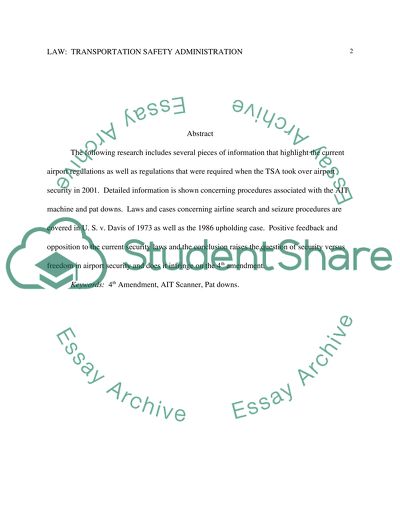Cite this document
(“Transportation Safety Administration Research Paper”, n.d.)
Transportation Safety Administration Research Paper. Retrieved from https://studentshare.org/law/1447011-4th-amendment-rights-and-tsa-screening
Transportation Safety Administration Research Paper. Retrieved from https://studentshare.org/law/1447011-4th-amendment-rights-and-tsa-screening
(Transportation Safety Administration Research Paper)
Transportation Safety Administration Research Paper. https://studentshare.org/law/1447011-4th-amendment-rights-and-tsa-screening.
Transportation Safety Administration Research Paper. https://studentshare.org/law/1447011-4th-amendment-rights-and-tsa-screening.
“Transportation Safety Administration Research Paper”, n.d. https://studentshare.org/law/1447011-4th-amendment-rights-and-tsa-screening.


